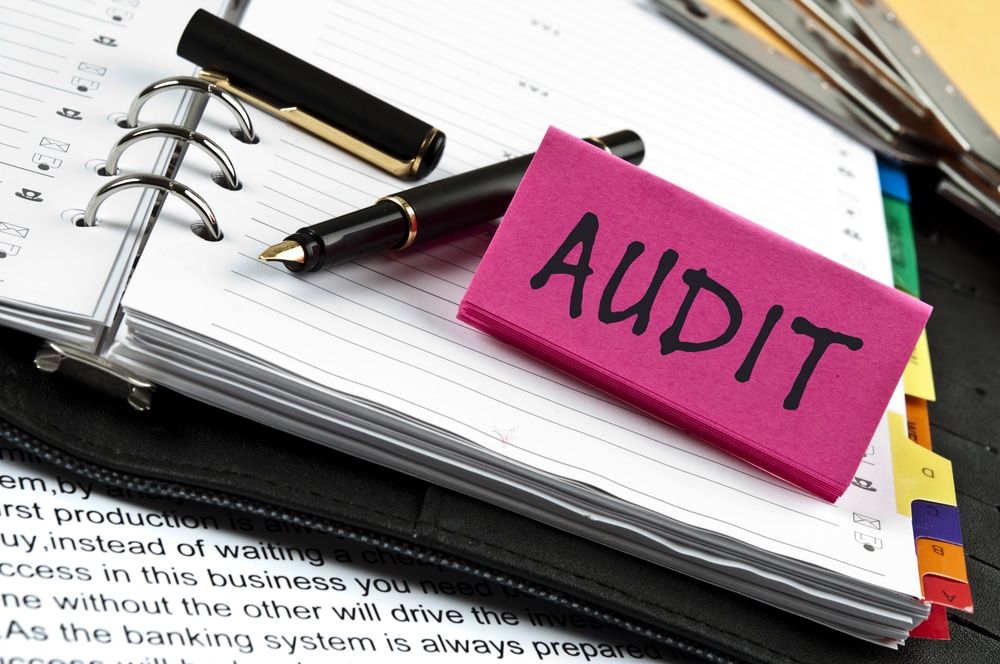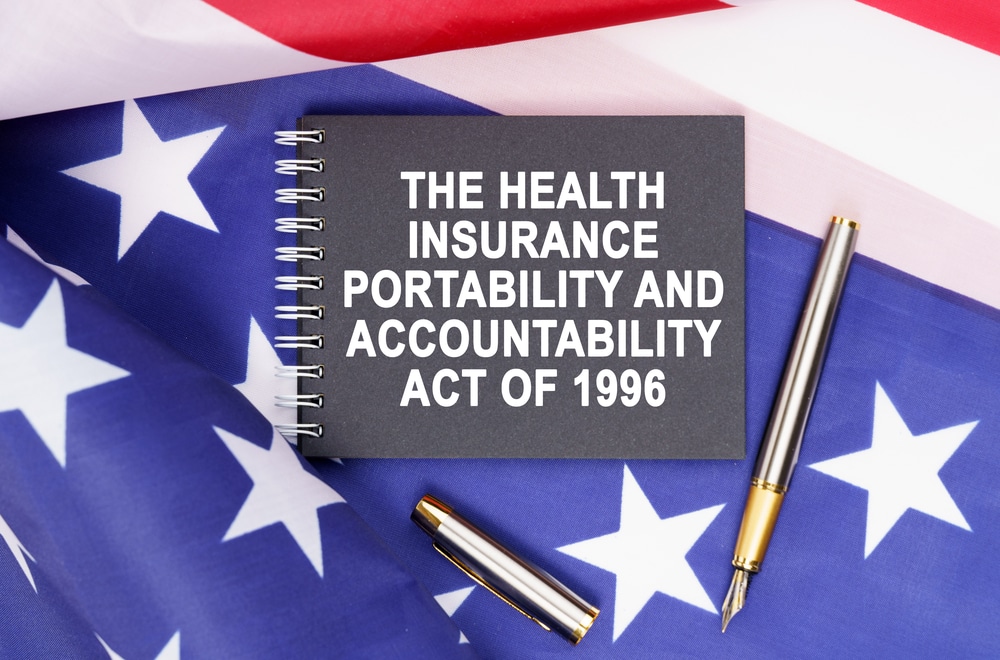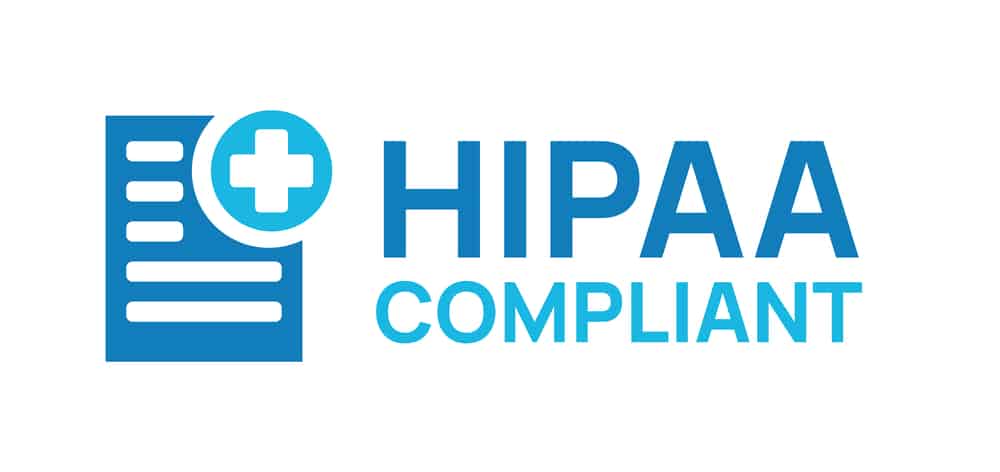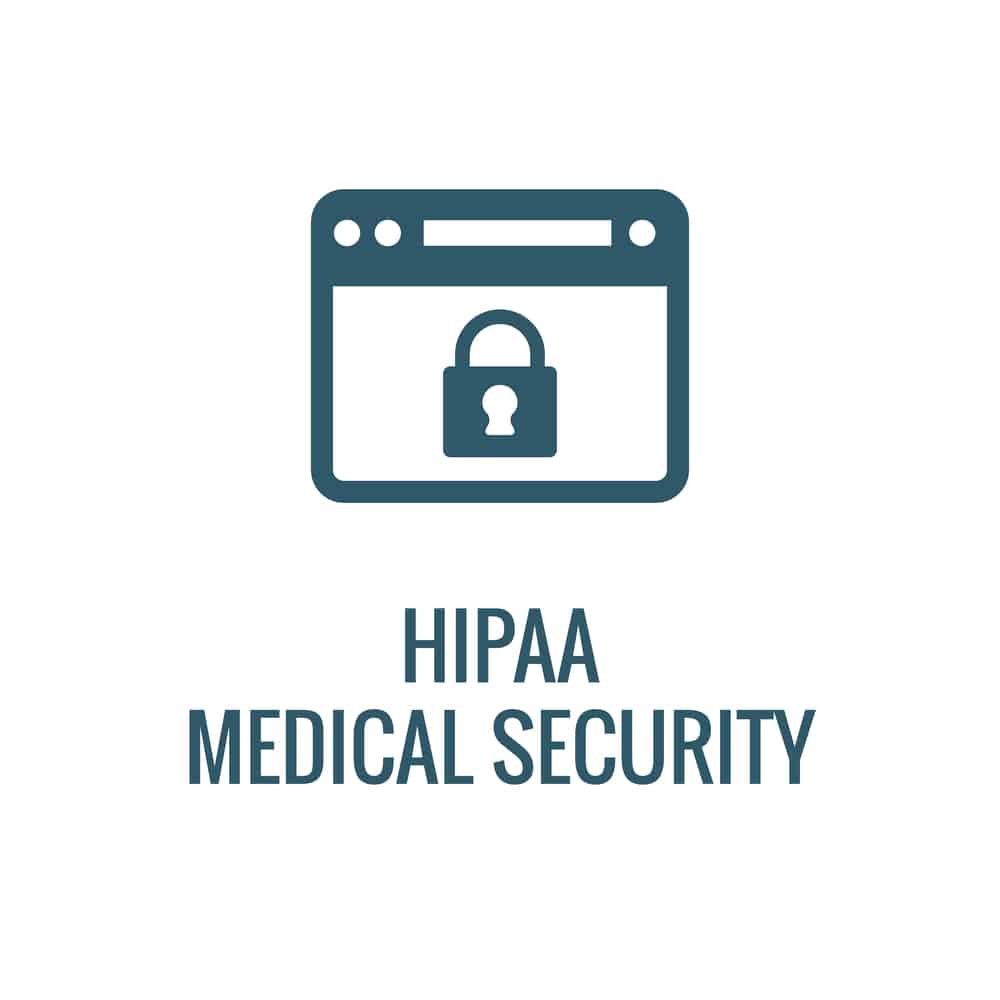HIPAA Audit Checklist

In an age where data flows like a digital river, safeguarding health information has never been more critical. Businesses entrusted with the healthcare data of their clients and patients bear a significant responsibility that extends beyond mere compliance.
It’s about safeguarding trust, preserving confidentiality, and ensuring the highest standards of care. This responsibility is embodied in the Health Insurance Portability and Accountability Act.
HIPAA – four letters that hold the power to transform how business entities and business associates handle healthcare data. Whether you’re a healthcare provider, a health plan, or a business associate, understanding HIPAA compliance is not just a regulatory requirement; it’s your commitment to protecting the interests of those you serve.
Welcome to the world of HIPAA audits – a process that ensures your commitment to data security remains steadfast.
In this comprehensive guide, tailored specifically for businesses aspiring to achieve and maintain HIPAA compliance, we will unravel the ultimate HIPAA compliance checklist and the complexities behind all of your business’s compliance obligations. We will also go through a HIPAA audit checklist that might help you stay in compliance.
If you are looking for an employee HIPAA training course, we have that available.
What’s a HIPAA Audit?
A HIPAA audit is the healthcare industry’s equivalent of a health check-up, albeit for your organization’s data security practices.
Conducted by an entity authorized by the U.S. Department of Health and Human Services office (HHS), it’s a process that evaluates how well your business complies with the standards outlined in the Health Insurance Portability and Accountability Act.
HIPAA audits serve a dual purpose: they hold organizations accountable for safeguarding protected health information (PHI) and promote continual improvement in data security practices.
There are three different kinds of audits meant to keep businesses HIPAA-compliant:

Random Audits
Random audits, as the name suggests, are like the unannounced inspections that keep organizations on their toes. Unlike scheduled audits, which are typically planned in advance, random audits can happen at any time, catching organizations off guard and aiming to foster a culture of continuous compliance.
Investigative Audits
Investigative audits represent a more targeted and probing form of scrutiny compared to random audits. Instead of a broad compliance assessment, investigative audits focus on specific concerns, potential HIPAA violations, or reported breaches.
Compliance Audits
Compliance audits are structured assessments designed to verify whether an organization consistently and comprehensively complies with all aspects of HIPAA regulations.
Unlike random and investigative audits, compliance audits are typically scheduled in advance and aim to assess the overall HIPAA compliance of covered entities and business associates.
A Quick Overview of HIPAA Regulations
HIPAA Privacy Rule
The HIPAA Privacy Rule, one of the fundamental provisions of HIPAA, is dedicated to safeguarding the privacy of individuals’ protected health information. This rule establishes a framework that governs how healthcare organizations and their business associates handle and disclose PHI.
Under the Privacy Rule, patients can control who can access their medical records and how their health information is used. It requires covered entities, including healthcare providers, health plans, and healthcare clearinghouses, to implement strict safeguards to protect identifiable health information.
These safeguards encompass access controls, encryption, and comprehensive policies and procedures that ensure the confidentiality and integrity of patient information.
Additionally, the Privacy Rule outlines rules for healthcare professionals’ disclosure of PHI, including the minimum necessary standard, which limits the disclosure of PHI to the minimum information necessary for the intended purpose. It also empowers patients with the right to access their own health records and request corrections to inaccuracies.

HIPAA Security Rule
The Security Rule is a critical component of the HIPAA and focuses on securing electronic protected health information (ePHI). Its primary objective is to establish safeguards that protect the confidentiality, integrity, and availability of ePHI while ensuring the ongoing functionality of electronic health systems.
Under the HIPAA Security Rule, covered entities must implement comprehensive security measures. These measures encompass technical, administrative, and physical safeguards forming a robust framework for protecting ePHI.
Technical Safeguards
It involves the use of access controls, encryption, and audit controls to secure electronic health records.
Administrative Safeguards
Encompasses policies, procedures, and employee training to ensure compliance and accountability.
Physical Safeguards
Protecting physical access to data storage facilities and health information technology is required.
The Security Rule also mandates risk assessments to identify vulnerabilities and threats to ePHI, followed by the implementation of appropriate measures to mitigate security incidents.
By adhering to provisions outlined in the Security Rule, healthcare organizations can reduce the risk of data breaches and unauthorized access while maintaining the trust of patients and staying HIPAA-compliant.

HIPAA Enforcement Rule
The HIPAA Enforcement Rule is pivotal in ensuring accountability and consequences for violations of HIPAA requirements. Under this rule, the U.S. Department of Health and Human Services (HHS) can investigate complaints and conduct audits to assess compliance with the outlined regulations.
It establishes a tiered system of penalties for violations, with fines varying based on the severity of the offense. These penalties can range from civil monetary penalties for non-compliance to criminal penalties for intentional or willful disregard for maintaining compliance.
Additionally, the Enforcement Rule guides the factors that HHS considers when determining the penalty amount, including the nature and extent of the violation, the organization’s level of cooperation, and its compliance history.
It also outlines the process for appealing penalties and provides mechanisms for resolving violations through voluntary compliance agreements.
HIPAA Breach Notification Rule
The HIPAA Breach Notification Rule is a pivotal component that mandates healthcare organizations to report data breaches involving PHI promptly. Its primary purpose is to ensure transparency and accountability when it comes to breaches of patient data privacy.
Under breach notification rules, covered entities must notify affected individuals, the HHS, and, in certain cases, the media when a breach of unsecured PHI occurs. This notification must be made without unreasonable delay, typically within 60 days of discovering the breach.
The Ultimate HIPAA Compliance Checklist
1. Administrative Safeguards
The administrative safeguards within this HIPAA audit checklist encompass a critical aspect of maintaining HIPAA compliance. These safeguards are essential for effective oversight and governance of an organization’s privacy practices and security rules.
Here’s an overview of each component:
Security Management Process
This involves the establishment of security policies, procedures, and measures to protect electronic protected health information (ePHI). It includes conducting regular risk assessments to identify vulnerabilities and developing strategies to mitigate risks effectively.
Security Officers
Designating individuals and a HIPAA security officer responsible for implementing and overseeing security measures is vital. This component ensures that there are dedicated personnel responsible for maintaining compliance and responding to security incidents.
Information Access Management
Controlling who has access to ePHI and under what circumstances is crucial. This safeguard includes implementing access controls, user authentication, and authorization processes to limit access to authorized personnel only.
Workforce Training and Management
Properly trained employees are the first line of defense against data breaches. Regular training ensures that employees (and the designated HIPAA compliance officer) understand their roles in remaining HIPAA-compliant and the security measures implemented towards protecting ePHI.

2. Physical Safeguards
Physical safeguards are paramount for ensuring the physical security of facilities, workstations, and electronic devices containing PHI throughout the HIPAA compliance process.
Here’s an overview of each component:
Facility Access Controls
This safeguard regulates physical access to facilities where PHI is stored or processed, and includes measures such as access cards, biometric controls, and visitor logs to limit entry to authorized personnel and the risk of a security incident.
Workstation Use and Security
Proper use and security of workstations are essential to prevent unauthorized access or a data breach. Employees must be trained to log off when not in use, and workstations should be secured physically and electronically.
Device and Media Controls
Managing electronic devices and media that store or transmit PHI is critical. This includes encryption, disposal, and tracking of devices and media to prevent data breaches or unauthorized disclosures.
3. Technical Safeguards
Technical safeguards play a pivotal role in achieving HIPAA compliance and are integral to every audit checklist. These measures are designed to protect ePHI by employing advanced technology and protocols.
Here’s an overview of each component:
Access Control
Access control is a cornerstone of HIPAA compliance. It ensures that only authorized individuals within covered entities and business associates can access ePHI. Robust access control mechanisms, including user authentication and role-based access, are essential to achieving HIPAA compliance.
Audit Controls
Audit controls are imperative to staying compliant and ensuring that security incidents are promptly detected and addressed. Audit logs and tracking mechanisms are fundamental for documenting compliance with HIPAA rules and undergoing an OCR (Office for Civil Rights) HIPAA audit.
Integrity Controls
Maintaining the integrity of ePHI is non-negotiable under HIPAA rules. Using data encryption and validation measures helps verify compliance and ensures that data remains unaltered and secure.
Transmission Security
Secure transmission of ePHI is a critical aspect of HIPAA compliance. Encryption and secure communication protocols must be adopted to protect data during transmission, reducing the risk of a data breach.
4. Organizational Requirements
Organizational requirements are critical to HIPAA compliance, aligning with our comprehensive HIPAA compliance checklist. Ensuring that both covered entities and business associates meet these requirements is essential to meet HIPAA compliance requirements.
Here’s an overview of these organizational requirements:
Business Associate Agreement
Establishing clear business associate agreements is a vital component of HIPAA compliance. These agreements formalize the responsibilities of business associates in safeguarding ePHI, ensuring that both parties are committed to compliance.
Documentation and Records
Maintaining accurate and comprehensive documentation and records is essential for demonstrating compliance with HIPAA policies and procedures. These records serve as critical evidence during HIPAA audits and OCR audits, validating an organization’s commitment to protecting patient privacy.
Policies and Procedures
Robust policies and procedures are the foundation of HIPAA compliance. Developing, implementing, and consistently following these policies are key steps in reducing the risk of HIPAA violations.

5. Breach Response & Notification
Breach response and notification procedures are pivotal aspects of maintaining HIPAA compliance and adhering to our HIPAA audit checklist. These processes ensure that healthcare organizations promptly and effectively respond to any security incident that may compromise PHI.
Here’s an overview of these procedures:
Compliance Checklist
Swift and accurate breach response is a fundamental element of HIPAA compliance. Any covered entity must have policies and procedures in place to address breaches promptly and stay HIPAA-compliant.
Breach Notification
If a breach occurs, HIPAA requires covered entities and business associates to notify any affected individuals and the HHS. Compliance with breach notification requirements is essential to avoid penalties and achieve HIPAA compliance.
Documentation and Reporting
Maintaining comprehensive HIPAA documentation of breach incidents and responses is crucial. This documentation serves as evidence of compliance during an OCR, desk, or physical audit, and is enormously helpful when conducting risk analysis.
Final Thoughts
Remaining HIPAA-compliant is paramount for healthcare organizations to safeguard patient data and ensure the highest privacy and security standards. Training your healthcare staff on HIPAA guidelines is important for your business, for your patients, and for your employees.
We hope our HIPAA audit checklist, spanning administrative, physical, technical, and organizational safeguards, can serve as a vital tool to achieve compliance and avoid any HIPAA violation in the future.
By adhering to these safeguards, we hope any covered entity and business associate is able to demonstrate their commitment to protecting patient information, mitigating risks, and upholding the civil rights and privacy policies and procedures outlined in said regulations.
At the end of the day, compliance is not just a legal requirement but a fundamental obligation to preserve trust and data integrity in modern healthcare.
Frequently Asked Questions
What triggers a HIPAA audit?
HIPAA audits can be triggered by various factors, including:
- Random Selection: Some audits are random and unannounced, designed to keep organizations accountable year-round.
- Complaints and Reports: Complaints filed by individuals or reports of a potential HIPAA violation may prompt an audit.
- Data Breaches: A significant data breach involving protected health information (PHI) may lead to an audit to assess the extent and causes of the breach.
How do I verify HIPAA compliance?
Verifying HIPAA compliance involves several steps:
- Conduct Regular Risk Analysis: Assess your organization’s vulnerabilities and risks to PHI to identify areas for improvement.
- Maintain Up-to-Date Policies and Procedures: Ensure your policies and procedures align with the latest HIPAA regulations.
- Staff Training: Regularly educate your workforce about their roles in staying compliant.
- Audit and Monitor: Regularly audit and monitor your compliance efforts to identify and address issues.
What are the 5 key elements of HIPAA?
The five key elements of the act encompass:
- Administrative Safeguards: Focusing on security management, personnel, information access, workforce training, and management.
- Physical Safeguards: Covering facility access controls, workstation use, and device and media controls.
- Technical Safeguards: Emphasizing access control, audit controls, integrity controls, and transmission security.
- Organizational Requirements: Addressing business associate agreements, documentation, and policies and procedures.
- Breach Response and Notification: Involving the process of responding to security breaches and notifying affected parties to establish accountability.
What are the privacy rights?
HIPAA privacy rights include the right to access and control one’s own health information, the right to request amendments to inaccuracies, and the right to know who has accessed or disclosed their PHI. Patients also have the right to file complaints about specific violations of these guidelines.
What is the role of a Privacy Officer?
A HIPAA Privacy Officer is responsible for overseeing an organization’s privacy policies and practices, ensuring compliance with HIPAA privacy rules, conducting staff training, handling privacy complaints, and serving as a point of contact for individuals regarding privacy concerns.
How did the Final Omnibus Rule impact HIPAA compliance?
This ruling introduced significant changes to the act, expanding the definition of business associates as a covered entity and their compliance obligations. It also increased penalties for violations and strengthened patient’s rights regarding their PHI.
What happens during desk audits for HIPAA compliance?
Desk audits are remote compliance audits conducted by the Office for Civil Rights (OCR). They typically involve a review of policies and procedures, documentation, and evidence of compliance with HIPAA standards. An OCR HIPAA audit assesses an organization’s adherence without an on-site visit.
Who must comply with HIPAA regulations?
Compliance is mandatory for covered entities, including healthcare providers, health plans, and healthcare clearinghouses. Business associates that handle patient sensitive patient data on their behalf via health information devices must also comply and run regular risk analysis to reduce the odds of a data breach.